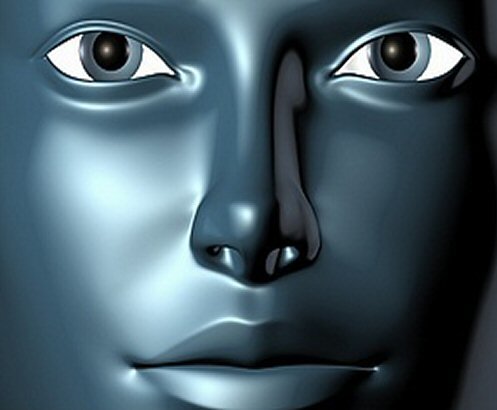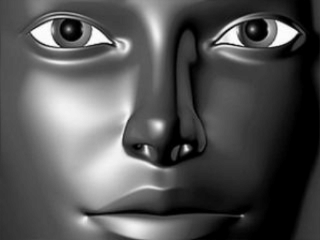MSc Research: Is there an uncanny valley?
This study was carried out for an MSc dissertation, towards a degree in psychological research methods. I had just begun thinking about the uncanny valley, and realised that the literature did not contain any empirical studies of how emotional response varied according to human likeness. I quickly realised that there were two issues: how to vary human likeness, and how to measure emotional response.
I solved the first problem by making 'morph movies' between a human and an artificial face. For example, this robot face was morphed into a this human face, producing the resulting animation:
I was able to pause the movie at defined points, and take stills of how the face looked at those points, and create images that were 100% human, 75% human and 25% robot, 50-50 human and robot, 25% human and 75% robot, and 100% robot:
I presented these faces to participants who took part online, and measured their emotional responses: this was the second problem to solve, and I did so by producing lists of positive and negative emotion words and asking participants how strongly they experienced each of them while looking at each face. Over 200 people took part, When analysed, I was able to plot overall negative and positive emotion for each level of human likeness:
You can see that there was a fluctuation away from a linear trend in both positive and negative emotion. This supported the idea that there was something interesting in the relationship between human likeness and emotion, but did not give an explanation of what it could be, or why it occurred.
I was interested in taking this study further, and began a PhD with the Open University to explore the questions in more detail.




